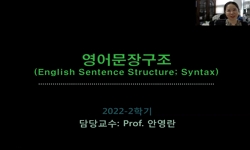Robert Schumann composed nearly all of his significant piano works in the decade from approximately 1829 to 1839. The majority of these exemplify traditional formal types, including three sonatas, three sets of variations, two sets of etudes, several ...
http://chineseinput.net/에서 pinyin(병음)방식으로 중국어를 변환할 수 있습니다.
변환된 중국어를 복사하여 사용하시면 됩니다.
- 中文 을 입력하시려면 zhongwen을 입력하시고 space를누르시면됩니다.
- 北京 을 입력하시려면 beijing을 입력하시고 space를 누르시면 됩니다.

슈만의 「크라이슬래리아나」 Op.16에서의 순환적 형식 구조에 관한 연구 = Principles of Formal Organization in R. Schumann's Kreisleriana, Op. 16
한글로보기https://www.riss.kr/link?id=A106868787
- 저자
- 발행기관
- 학술지명
- 권호사항
-
발행연도
2004
-
작성언어
-
-
주제어
Robert Schumann ; Piano Cycle ; Song Cycle ; Romantic Cycle ; Cross Reference ; Cyclic Structure ; Key Unit ; Three-Section Closed Form (Ternary Form) ; Three-Section Open Form (Rounded Binary) ; Seq니ence of Keys ; Tonal Space ; Harmonically Open Endings ; Harmonically Open Beginnings ; 슈만 ; 피아노 싸이클 ; 연가곡 ; 낭만 싸이클 ; 동기적 재현 ; 순환 구조 ; 조성적 단일성 ; 닫힌 3부분 형식 ; 열린 3부분 형식 ; 조성의 동형 진행 ; 조성 공간 ; 열린 종지 ; 열린 시작
-
등재정보
KCI등재
-
자료형태
학술저널
-
수록면
159-176(18쪽)
- 제공처
- 소장기관
-
0
상세조회 -
0
다운로드
부가정보
다국어 초록 (Multilingual Abstract)
Robert Schumann composed nearly all of his significant piano works in the decade from approximately 1829 to 1839. The majority of these exemplify traditional formal types, including three sonatas, three sets of variations, two sets of etudes, several independent pieces, and a number of collection of pieces. However, several of Schumann’s most well-known works from this period, the so-called "piano cycles," have no real precedent among works by earlier composers.
In researching the literature on cycles, I have found no detailed analytic approaches focusing on Schumann’s formal organization in his cycles. Music historians and theorists often dismiss the importance of formal consideration in Schumann’s cycles and postulate that Schumann instinctively juxtaposed individual pieces to form a collection without much coherent organization. I, however, suggest that Schumann's cycles result from preconceived plans that govern overall tonal structure and control the formation of details, relating them to a larger context. I also suggest that Schumann's piano cycles can be divided into three types:
1. Works such as Camaual, Op. 9, in which many brief pieces are linked by a large-scale coherent key scheme, recurring motives, and referential tonalities.
2. Compositions like Kreisleriana, Op. 16, in which the individual movements are lengthier than in those of the first type, and for the most part display conventional forms. This type of cycle consists of fewer movements, and often suggests a conventional multi-movement arrangement such as might be found in a sonata.
3. The third type contains only three works: the Arabeske, Blumenstuck, and Humoreske. This third type is a hybrid of the first and second types; there are fewer numbers of movements, as in type 2; but these movements are relatively shorter, as in type 1. The third type, furthermore, has other special features; these cycles are thematically unified throughout and in some respects suggest a long single movement with well-defined sections (for example, a Rondo).
With these two suggestions, the third part of my study investigates how unity is supported on multiple levels in Schumann’s Kreisleriana. My methodology involves the following procedures:
1. Aspects of harmonic features: Important harmonic events and keys of upcoming movements are prepared and anticipated in preceding movements. And the presence of many harmonically open structures facilitates the establishment of strong local connections between sections and movement of Kreisleriana.
2. Principles of formal design including the relationships between the form of individual movements and the cyclic role within cycle.
동일학술지(권/호) 다른 논문
-
- 한양대학교 음악연구소
- 宋芳松(Bang-song Song)
- 2004
- KCI등재
-
- 한양대학교 음악연구소
- 권송택 ( Song-taek Kwon )
- 2004
- KCI등재
-
노트커 발불루스(Notker Balbulus)와 그의 「찬송서」(Liber Ymnorum)
- 한양대학교 음악연구소
- 장우형 ( Woo-hyung Chang )
- 2004
- KCI등재
-
음악교과서에 나타난 다문화적 접근(Ⅱ) -중등학교를 중심으로-
- 한양대학교 음악연구소
- 주대창 ( Dae Chang Ju )
- 2004
- KCI등재




 KISS
KISS





